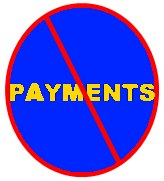
 Visit Keith's Financial Page on Facebook
Visit Keith's Financial Page on Facebook | I have some really great eBooks available! Click HERE for more information. |



| To
learn a lot more about saving, investing,
eliminating debt and
becoming wealthy, please read the articles
on the Financial Page.
There, you will find a veritable treasure of what to do and
how to do
it. |
